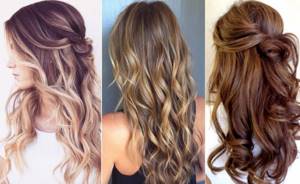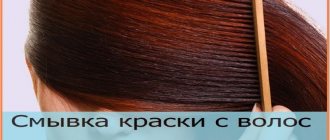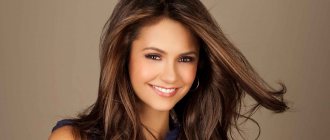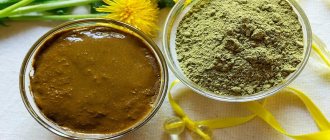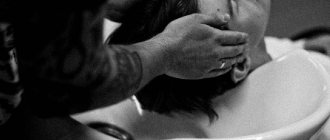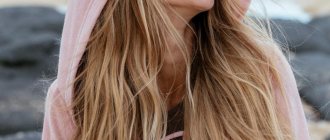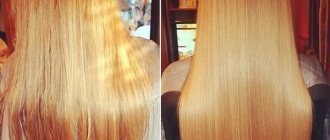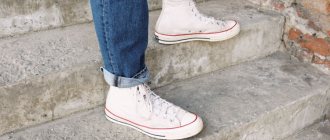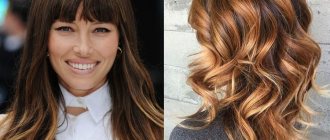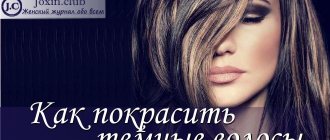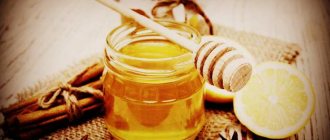What it is?
Shatush is a popular coloring technology that, if done correctly, will create the stunning effect of sun-bleached strands. This technique with an unusual name is a kind of highlighting, which means stretching several similar shades of dye over the hair.
Painting using a similar application pattern is applied both to the entire volume of strands and exclusively to the ends, reminiscent of the ombre technique. Despite the fact that shatush is a subtype of highlighting, a cap or foil is not used for its implementation.
The dye must act on the hair when it is open, coloring selected strands without affecting the roots.
This coloring technique also has many advantages:
- Delicate coloring does not injure and affects only a small number of strands.
- Looks natural and natural.
- Creates a new image without radically changing the hair color.
- Thanks to smooth transitions, hair looks fuller and fuller.
- Suitable for any hair type and any length.
- There is no need for frequent corrections.
Advantages and disadvantages
The undoubted advantages of the shatush technique include:
- it is perfect for light brown, dark brown and dark hair of women of any age;
- Shatush allows you to effectively disguise gray hair;
- the technique is gentle, since absolutely the entire mass of hair is not affected when dyeing;
- after the correct technique, the hair looks elegant and as if you had just visited an expensive hairdresser;
- for shatush, in contrast to full painting, fewer consumables are required;
- there is no need for frequent color correction - even after a few months your hairstyle will look natural.
But there are also some disadvantages:
- on short hair it is difficult to convey the entire play of color and the smooth transition of shades;
- Blonde or red hair will have to be tinted before shatush;
- in some cases, shatush should only be done by an experienced craftsman.
Can I dye my own hair at home?
Shatush is a rather complex technique for those new to coloring and achieving a harmonious, beautiful result will not be easy. However, not every girl can afford to go to a salon because of the high prices for this equipment, and therefore many of them prefer to do the coloring themselves.
By itself, shatush does not require any special knowledge. The main thing is to strictly follow all the instructions and then you can achieve a good result without spending a lot of money.
Comparison with ombre and balayage coloring
Ombre is a familiar option for many for all occasions. Compared to shatush, it looks brighter, catchier and not so natural. Suitable for medium to long hair, regardless of color.
Balayage is in many ways similar to shatush, however, it is more noticeable on light and brown hair. It is perfect for those who want to update their image, but are not ready for drastic changes.
If you cannot decide on the choice of equipment, consult with a specialist. He will help you choose the best option.
How to properly prepare your hair?
In order for coloring at home to be no worse than in professional salons, the hair must be prepared. A few days before the procedure, it is advisable to nourish them with special masks that match your hair type.
Important! If the condition of the hair is deplorable and it looks dry and lifeless, then it is better to postpone the procedure for some time and carry out a full course of moisturizing and nourishing masks.
It is also recommended to trim the ends a couple of days before painting and give them a shape that will look best using the shatush technique. To protect your curls and reduce the risk of damage from using a chemical coloring product, the dye should be applied to dirty hair. Thus, the last hair wash before the procedure should be 2-3 days before. During this period, it is not advisable to use any styling products.
In what cases is it justified to do this at home, and in what cases is it better to go to the salon?
Of course, the final decision is yours, but you can still try to make a shatush yourself if:
- you are well versed in coloring or highlighting technology;
- you want to change your image a little without resorting to radical measures;
- you have medium or long hair of dark brown, ash and other similar shades, which can be immediately applied to shatush, without the use of additional tinting.

But in some cases you can’t do without a salon:
- you are not confident in your own capabilities or do not want to spend extra time and effort;
- you liked a specific shade or several;
- you have blond or red hair that requires correction before the procedure - toning, trimming ends, etc.;
- your hair retains the remnants of the previous coloring.
Painting technology
There are two types of coloring using the shatush technique:
- with fleece;
- without backcombing.
With fleece: step-by-step instructions
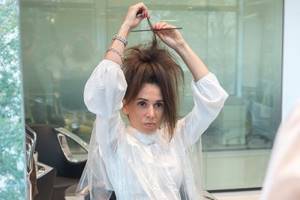
Hair should be thoroughly combed and pulled into a high ponytail. The closer the tail is to the forehead line, the more noticeable the result will be. In order for the effect to be only at the ends, the tail must be collected closer to the top of the head.- Carefully separating the strands, you need to run a comb over each of them to create a backcomb. This stage is key, since the further result and contrast depend on the thickness and density of the pile.
- The next step is to prepare the paint. It is necessary to mix the paint with the oxidizing agent in a special ceramic or plastic container, and then mix thoroughly until smooth. The amount of paint is taken based on the length and thickness of the strands. For medium hair, long to the shoulder blades, one package of dye may be enough.
- Using a brush, paint should be applied to the combed strands with careless and even careless strokes.
The less evenly the dye is distributed throughout the hair, the brighter and more beautiful the result will be. After the strands are dyed, they must be twisted into a rope and left for 20-25 minutes. After this time, you can take one strand, carefully wash off the dye from it using a wet cotton pad and look at the result. If the color is not saturated enough, then you can wait another 20 minutes so that in total the dye does not stay on your hair for more than 40 minutes. - Once the waiting time is up, hair should be thoroughly washed, dried and blow-dryed. Don't forget to use balm and conditioner while washing.
Without backcombing
This technique is almost impossible to do on your own, since only a specialist from a salon can handle it. Without backcombing, dyeing occurs more subtly and the color is distributed throughout the hair due to proper application with a brush.
Reviews about coloring shatush
Several of our readers who tried to do shatush-style coloring at home shared their impressions and left reviews about the technique.
Angelina, 30 years old:
From time to time I began to notice telltale gray hairs in my hair, so now I wear makeup all the time. Recently I decided to try the shatush hair coloring technique at home to slightly revive the color of my hair.
There were no problems, because I had already practiced both coloring and highlighting. I divided my hair into four parts, combed it, applied beige dye for half an hour, and washed it off.
It turned out well, but in a month I’ll probably go to the hairdresser. Let them try to make me a shatush in two or three shades.
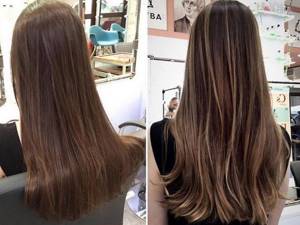
Photos before and after hair dyeing using the Shatush method.
Expert's comment: Angelina got a good result, but when working with several tones, you still need the hand of an experienced craftsman. Only he will be able not only to choose the right shades for your base colors, but also to achieve their beautiful transition from one to another, thereby creating a stylish and effective color palette.
Svetlana, 29 years old:
I did ombre three months ago, but now I wanted something new. I don’t want to recolor my hair so as not to further damage my hair. Therefore, I settled on the shatush technique. In addition, I was very interested in how to do dyeing on a backcomb.
I worked with only one dye - lightener, and left it on my hair for half an hour. As a result, the transition of shades did not turn out quite as I expected, but overall I am pleased.
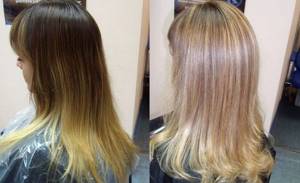
Photos before and after hair dyeing in the Shatush style.
Specialist comment: When performing the shatush technique on previously dyed hair, you should consult a specialist. Perhaps he will advise you to wash off the remaining dye or tint your hair along the entire length. Otherwise, when performing shatush, the old shade may inharmoniously mix with the new one, and you will get a completely different result than you expected.
Victoria, 33 years old:
I have always been a supporter of naturalness and naturalness. Within reasonable limits, of course. Therefore, techniques like shatush are just for my taste. I didn’t want numerous shades, so I made the shatush at home in the simplest possible way.
I combed my ponytail, lightly treated it with lightener along the backcomb, and let the dye sit for only about twenty minutes. It looked like the strands were slightly burnt out - this is exactly the effect I was trying to achieve. In general, I'm quite satisfied. And my colleagues said that I began to look younger.
But now I doubt it - can I make a mask from colorless henna? I’ve read about its benefits and want to try it, but I don’t know if it can be done after coloring the shatush.

Photos before and after applying Shatush coloring.
Expert's comment: It is better to care for colored hair using special hair balms.
If you want to use henna, then first try doing a test on a small piece of your dyed strand. This way you can determine whether henna will change the shade of your hair or color the lightened areas.
How to care for your curls after the procedure?
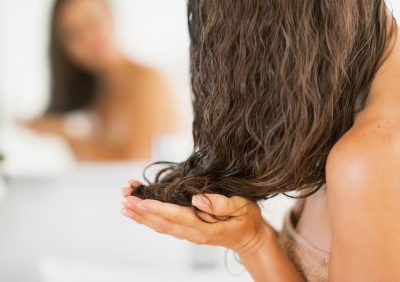
Proper hair care after dyeing consists of:
- Using shampoos and conditioners suitable for your hair type.
- Gentle and gentle combing.
- The use of special moisturizing and nourishing masks.
- Complete refusal for the first time from thermal tools intended for styling.
How to choose the right tone?
Having decided to make the shatush yourself, select the desired tone and purchase paint. To do this, you need to take into account the structure and color of your hair. So, blondes or fair-haired women should use a gentle dye without ammonia, which can lighten the strands by only 2-3 tones. For brown-haired women and brunettes, ammonia-free products are absolutely not suitable. You will have to use a special brightener.
In order for the painting result to be as natural as possible, the shade you choose should differ from the base by no more than 3 tones. But too obvious a contrast does not look so beautiful.
Shades for dark hair
Shatush looks great on dark hair, and the palette of shades is quite wide. You can safely use titian, hazelnut, coffee with milk, honey, bronze, dark beige, amber. We advise girls with an ideal complexion to opt for red or copper.
Shades for brown hair
For fair-haired women, the best choice would be an ash, golden, wheat or medium brown tone. They create the effect of burnt strands and give the hair additional volume.
Shades for blondes
For those with fair hair, either a pearl shade or a platinum blonde would be ideal. In this case, the effect will be only slightly noticeable. But these colors can enliven your hair and give it a slight shine.
To evaluate the result, look at these photos.
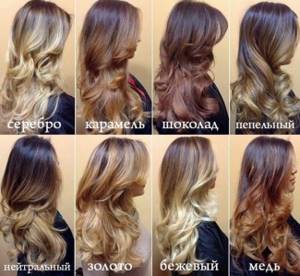
Advice! If you are not confident in your abilities, use the services of a professional colorist. The specialist will be able to choose exactly the shade that suits you.
What to do if the result was not achieved?
In rare cases, the result may not be at all what was expected. In such situations, you first need to pay attention to the paint and oxidizer that was used for coloring. The paint itself may be expired or the dye was not strong enough.
You can also correct this situation yourself, but since the curls have just been dyed and new exposure to chemicals can greatly damage them, it is advisable to wait 2-3 weeks. If your hair needs to be put in order as quickly as possible, then it is better to contact a specialist who can correct the result without harming the hair.
Basic rules for DIY coloring
When deciding to do home coloring, you take full responsibility for the result. To prevent it from disappointing you, follow the basic rules:
- Do coloring only when the hair is completely healthy.
- If you are unfamiliar with the basics of color , ask a professional for advice. He will help you choose the most harmonious shades.
- Follow the instructions - do not increase or decrease the time of exposure of the composition to the hair.
- Prepare the paint only before use - the longer the chemical composition is left in the open air, the more it oxidizes.
- Be sure to do an allergy test, even if you have already used this paint before . Manufacturers often change the composition of their products.
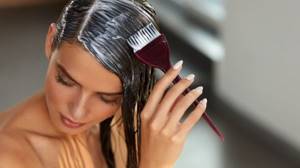
Useful tips
A few tips to make painting the shatush as effective as possible:
- If your hair is dark, it is better to use soft tinting products that are close in color to your natural color.
- The composition should be distributed carefully on short hair. In this case, the distance from the roots can be reduced, but it is important to make the transition soft.
- To make your curls look natural in the photo, use high-quality dye and carefully select the tone.
The shatush technique is the best option for unusual and gentle coloring.
How to make at home: basic techniques
So, what should you do if you decide to do the coloring yourself? To begin, prepare a workplace, tools, take a dye: lightening powder or paint that contains ammonia.
Useful video: How to make shatush for yourself
When painting at home, it is recommended to use the following coloring agents:
Paint Characteristics
- L'oreal Colorista Ombre Cream color that is great for lightening, smooth transition to light ends. The set also includes a special comb for coloring.
- L'oreal Preference Londa Professional It is distinguished by premium quality, has an original paint composition based on volumetric coloring pigments. It stays in the hair structure for a long time, creates a rich color that is resistant to washing out and dullness. Completely covers gray hair. Makes hair softer and silkier.
- Garnier Color naturals The composition contains oils and other nutritional components that protect curls from the negative effects of coloring.
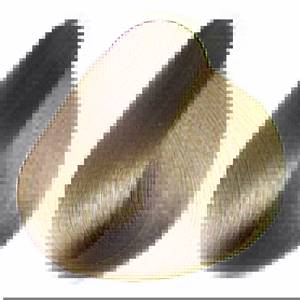
Make yourself comfortable so that you don’t have to be interrupted by trifles during the process, because... There is not much time for dyeing: the product should not be on the hair for more than 40 minutes.
Paint selection
If you have already decided to highlight your hair using the shatush technique, then you need to start by choosing the desired shade. It must match your color type. For girls of Spring and Autumn it should be warm, and for Winter and Summer it should certainly be cold. Mixing two color types in one image will cause dissonance, highlight all skin imperfections, and facial features will look unattractive.
Don't know which season you are? Look into the iris of your eyes. If you see golden specks in it, you are Spring or Autumn. Look at the veins in your wrist. What color do they appear to be? If you define them as greenish, you are a warm color type. Blue veins are a sign of Winter or Summer.
For shatush you need to take a dye that is only two shades lighter than your natural hair color. The reddish range (Titian, amber, copper and others) is beautiful in itself, but only Autumn girls with fair skin with warm undertones and brown or green eyes can use it.
How does shatush differ from other highlighting techniques?
All of the above methods are designed to create the effect of “hair bleached under the southern sun.” But the strands are lightened in different ways. For example, with a clear border - ombre. The hairstyle will look as if you were wearing a headdress, and the ends of the strands were peeking out from under it.
The term “bronding” comes from two words: “bronze” and “blond”. This technique looks great on brown-haired women: they only need to lighten the ends of their hair a little. California highlighting is the coloring of thin strands in a chaotic manner. The method adds volume to the hair and adds freshness, radiance and depth to the hair color.
Shatush and balayage coloring techniques are very similar in results. The result is the most blurred border between dark roots and light ends. The whole difference between shatush and balayage is in the coloring technique. The technique that this article is devoted to is based on the fact that highlighting is done in an open way, without the use of foil.
Suitable shades
Correct choice of color is the most important stage, which will directly affect the final result. Natural shades are most suitable for dark curls:
- Light brown.
- Wheat.
- Ashen.
- Copper.
- Honey.
- Pearl.
- Beige.
- Walnut.
- Golden.
- Cognac.
- Ginger.
- Chestnut.
When choosing a coloring composition, you should give preference to paints with natural ingredients, for example, basma or henna, and moisturizing substances that can neutralize the negative effects of color pigments. An important point is the correct choice of oxidizing agent, otherwise the wrong percentage of the product will cause harm to the hair or will not allow you to achieve the desired effect.
For fine hair, 3% oxide is suitable, and for thick and coarse strands you should choose 9% or even 12%.
An important point when choosing a paint shade is compatibility with the natural skin tone, eye color and natural hair color.
Shades of gold, pearl, wheat and beige on dark hair will help create the most natural look.
Red and red ends will give the owner courage and extravagance.
Shatush on blondes and gray-haired ladies
In these cases, it is important to choose the right tone that matches your color type and is close to the shade of your hair. If gray hair makes up about 40 percent of the hair, the following tones are used to highlight shatush:
- gray-pearl;
- cold ashen;
- walnut.
To create a warm, soft look, you can try:
- wheat;
- golden;
- beige.
Natural blondes can lighten the ends of their strands with milky, platinum, pearl (cold) or golden, wheat (warm) shades.
As mentioned above, in salons, masters perform the reverse technique, darkening the root part of the head. For this, related shades with a difference of 1-2 tones are used. As the photos show, the shatush dyeing technique on blondes is less impressive and noticeable. However, such highlighting makes the image more feminine, and the color of the hair more saturated and iridescent.
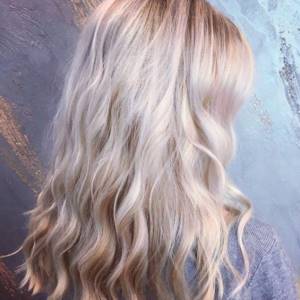
In conclusion, I must add that after shatush you need to carefully care for your hair. Use detergents from the “For colored hair” series, do not forget to make masks and use balms with carotene. If you want to get a haircut, do it before the highlighting procedure, not after. Some masters make shatush without backcombing, which is better for hair health. So it is better to carry out this complex procedure not at home, but in a hairdresser.
Who is Shatush suitable for?
The term shahtoosh was coined by Italian stylist Aldo Coppola. Initially, “shatush” had nothing to do with hairdressing and meant a very expensive fabric made of beautifully crafted Angora wool. Coppola named his method that way because the hair after such highlighting shimmered and was soft and delicate, like this material.
But who is the shatush suitable for? The result looks especially impressive on brunettes, fair-haired and brown-haired women. Blondes can also refresh their look using the shatush technique, but it is better for them to go to a salon for this. But such highlighting is not suitable for red-haired girls.
Since shatush involves maximum color stretching, the technique is most beneficial on long or medium hair. On a short haircut, the border will stand out too much. But shatush is a salvation for those women who have just begun to go gray. Due to the randomness of alternating strands of bleached hairs, it will not be visible. Unlike the ombre technique, which requires perfectly even curls, shatush can also be done on curly locks. It also applies to curls.
